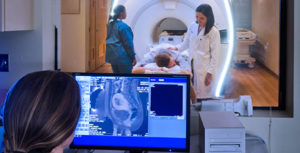Reducing Fear in Imaging Patients
Diagnostic imaging is the umbrella term used to describe the X-rays, CT scans, or MRIs that doctors use to confirm a patient’s diagnosis or to monitor treatment. Imaging is an invaluable tool for clinicians. Since we cannot easily open the body up to see what is wrong, imaging does the next best thing, providing a noninvasive window into the body without damaging tissue or exposing it to infection. Imaging is considered to be one of the most essential pieces in the diagnostic puzzle.

While there is some consideration for exposure to radiation or radioactive materials, imaging techniques are largely harmless and pain-free. Despite this, recent studies have revealed that over half of patients report some fear or anxiety about undergoing radiological testing. In fact, fears surrounding image studies are so prevalent that many people will delay or completely avoid getting much-needed testing performed. To counter this, some healthcare industries have begun to investigate the roots of this strange phobia and find out what might help patients overcome their reluctance and get the medical care they need.
Why the worry?
The fear of imaging seems to stem from two key concerns. The first is the claustrophobic nature of the equipment itself. Though painless, CT and MRI scanners require a patient to lie completely still as they are routed through a very small tunnel, often for an extended period of time. Some procedures are noisy and involve flashes of light, which can be very disconcerting. The pressure to remain motionless can make many people immediately ill-at-ease, or worse. More than once, scans have had to be stopped mid-exam to let the patient out before panic strikes. Claustrophobia is a common issue, and many patients do not realize how much so until they attempt the confines of a scanning instrument. To make matter worse, imaging procedures have garnered a public reputation for being unpleasant, causing inexperienced patients to develop preconceived reservations about them.
The second concern is what the test results will reveal. While doctors can make a diagnosis using medical examinations and laboratory testing, it is the imaging that confirms it, not only making that diagnosis irrefutable, but also demonstrating the extent to which a disease may have progressed. Understandably, this can be very frightening for patients, and they might naturally avoid the testing in order to avoid facing the reality of their case.
What can help?
The results of patient surveys provided some suggestions for making the imaging experience less frightening and more palatable. The majority of patients expressed that face time with a provider and being properly prepared for the procedure, such as with Q&A sessions, reading material, and videos, would greatly allay their fears. Healthcare providers should take the time to carefully explain each procedure to a patient, and then answer any questions they may have, especially those that indicate that the patient may be fearful or uncertain. Alleviating patient fear is critical to achieving good image quality, a reduction in costly test repeats, and timely therapy.